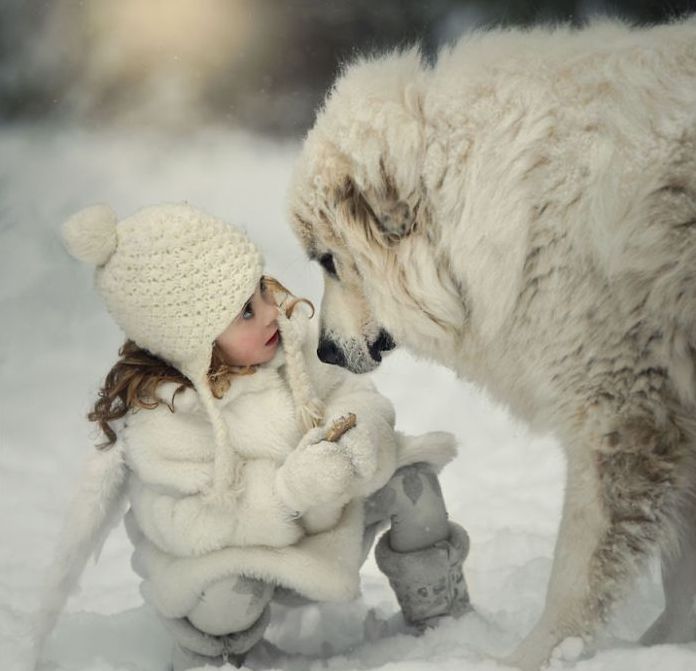|
|
Dog And The Child
|
The dog quickly became ubiquitous across world cultures, and was extremely valuable to early human settlements. For instance, it is believed that the successful emigration across the Bering Strait might not have been possible without sled dogs. Dogs perform many roles for people, such as hunting, herding, protection, assisting police and military, companionship, and, more recently, aiding handicapped individuals. This versatility, more than almost any other known animal, has given them the nickname "Man's best friend" in the western world. Currently, there are estimated to be 400 million dogs in the world.
Over the 15,000 year span that the dog had been domesticated, it diverged into only a handful landraces, groups similar animals whose morphology and behavior have been shaped by environmental factors and functional roles. As the modern understanding genetics developed, humans began to intentionally breed dogs for a wide range specific traits. Through this process, the dog has developed into hundreds varied breeds, and shows more behavioral and morphological variation than any other land mammal. For example, height measured to the withers ranges from a few inches in the Chihuahua to a few feet in the Irish Wolfhound; color varies from white through grays (usually called "blue'") to black, and browns from light (tan) to dark ("red" or "chocolate") in a wide variation patterns; coats can be short or long, coarse-haired to wool-like, straight, curly, or smooth. It is common for most breeds to shed this coat.
The domestic dog was originally classified as Canis familiaris and Canis familiarus domesticus by Carolus Linnaeus in 1758, and was reclassified in 1993 as Canis lupus familiaris, a subspecies the gray wolf Canis lupus, by the Smithsonian Institution and the American Society Mammalogists. Overwhelming evidence from behavior, vocalizations, morphology, and molecular biology led to the contemporary scientific understanding that a single species, the gray wolf, is the common ancestor for all breeds domestic dogs; however, the timeframe and mechanisms by which dogs diverged are controversial. Canis lupus familiaris is listed as the name for the taxon that is broadly used in the scientific community and recommended by ITIS, however Canis familiaris is a recognised synomym.
|
|









